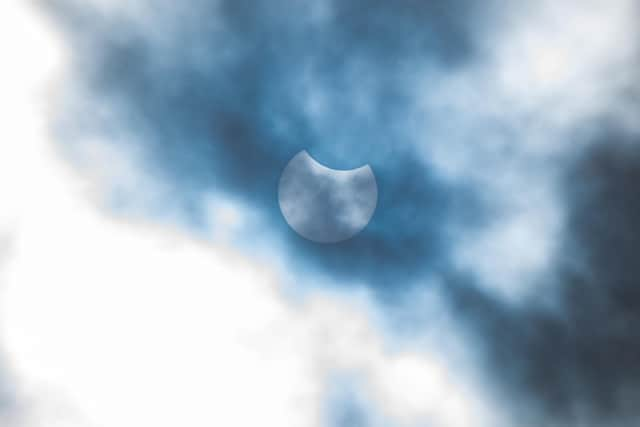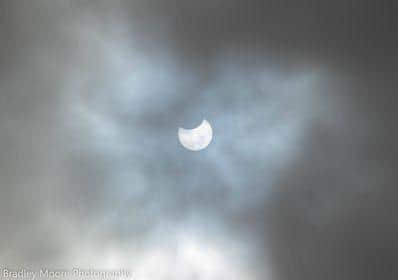Pictures as residents catch glimpse of partial solar eclipse over Derbyshire
and live on Freeview channel 276
Nearly a third of the Sun was blocked out by the moon in the rare celestial event that reached it’s maximum at around 11.14am this morning (June 10).
Partial eclipses happen every one or two years, when the Sun and Moon are exactly in line with the earth but the apparent size of the Moon is smaller than that of the Sun.
Advertisement
Hide AdAdvertisement
Hide AdWhile Derbyshire wasn't plunged into darkness like some other viewing parties across the world, the spectacular partial eclipse was still a special occasion for many.


Skygazers in parts of the county captured the scene this morning as it peeked through the clouds, with the advice as ever to not try to look at the Sun with the naked eye.
Andrew Newton, from Clowne, snapped a picture of the eclipse as it reflected into his outdoor coffee table.
He said: “I didn't realise there was an eclipse until I saw the sun had a piece missing.”


Advertisement
Hide AdAdvertisement
Hide AdMeanwhile, Dave Buttery submitted pictures to the Derbyshire Times of the view over Belper.
Brad Moore was also poised to catch a picture of the eclipse in the skies over Chesterfield.
A partial eclipse is different to a full solar eclipse in which the Moon completely blocks out the sun – a phenomenon last seen in the UK on August 11, 1999 and one that is not due again until 2090.